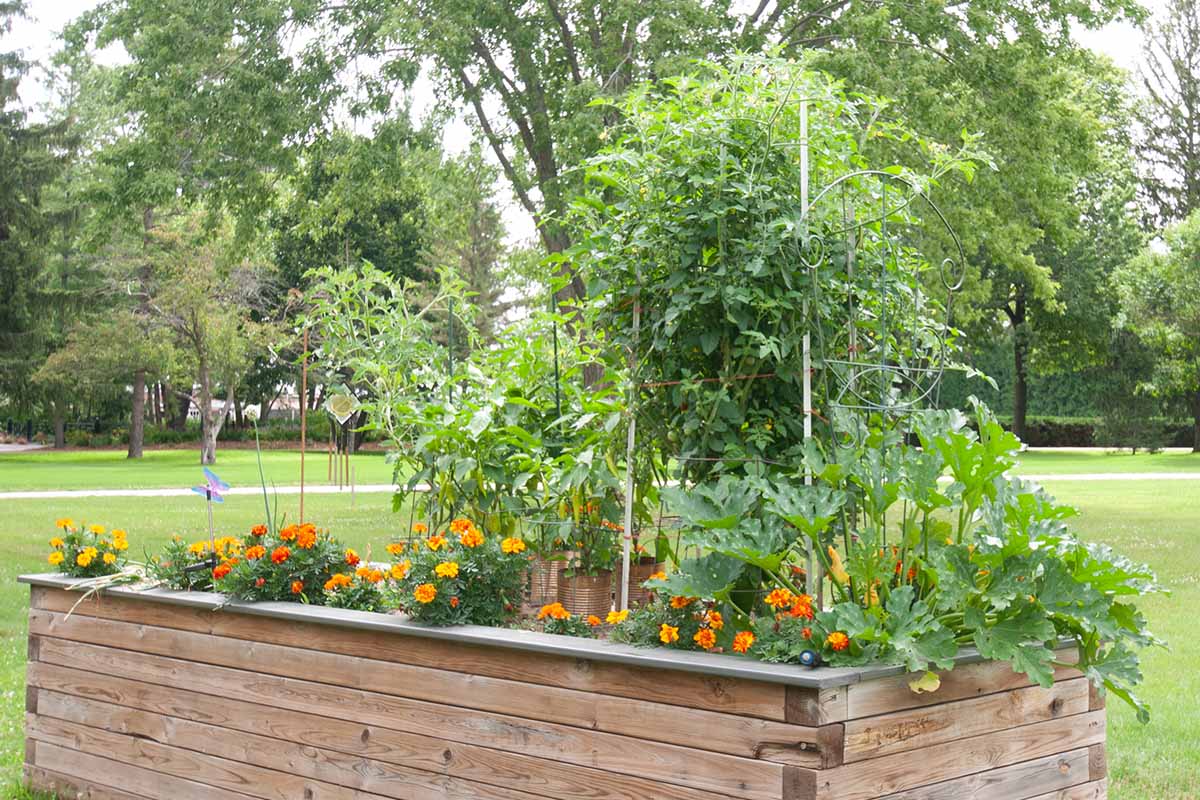The Ultimate Guide To Companion Planting
The Ultimate Guide to Companion Planting
Companion planting is a gardening technique that involves planting certain plants together in order to benefit each other. This can be done to attract beneficial insects, deter pests, improve soil quality, or increase yields.
There are many different benefits to companion planting. Some of the most common include:
- Attracting beneficial insects. Many plants attract beneficial insects, such as ladybugs, lacewings, and parasitic wasps. These insects help to control pests, which can save you money on pesticides.
- Deterring pests. Some plants have strong scents that can deter pests. For example, marigolds and nasturtiums are often planted near tomatoes to help repel whiteflies and other pests.
- Improving soil quality. Some plants help to improve soil quality by fixing nitrogen or adding organic matter. For example, legumes, such as peas and beans, fix nitrogen in the soil, which can benefit other plants in the garden.
- Increasing yields. Companion planting can sometimes increase yields. For example, planting carrots and onions together can help to improve the flavor of both vegetables.
There are many different ways to companion plant. Some common methods include:
- Planting alternating rows of different vegetables. This helps to deter pests and improve air circulation.
- Planting tall plants to provide shade for shorter plants. This can help to protect shorter plants from the sun and wind.
- Planting plants with different root systems together. This helps to prevent competition for water and nutrients.
When choosing companion plants, it is important to consider the needs of the plants involved. Some factors to consider include:
- Planting requirements. Some plants have different sunlight, water, and nutrient requirements. It is important to choose companion plants that have similar requirements.
- Pests and diseases. Some plants attract or repel certain pests and diseases. It is important to choose companion plants that will help to protect each other from pests and diseases.
- Flavor. Some plants can improve the flavor of other plants. For example, planting basil near tomatoes can help to improve the flavor of the tomatoes.
There are many different resources available to help you learn more about companion planting. Some good resources include:
- The Companion Planting Handbook by Carol Deppe
- The Vegetable Gardener's Companion by Louise Riotte
- The New American Kitchen Garden by Eliot Coleman
Companion planting is a gardening technique that involves planting different types of plants together to benefit each other. Some plants attract beneficial insects, while others deter pests. Some plants help to improve the soil, while others provide shade or support.
If you're interested in learning more about companion planting, I recommend visiting Gardenia Inspiration. This website has a comprehensive list of companion plants, as well as information on how to plant them together for maximum benefit.
FAQ of list of companion plants
Q: What are companion plants?
A: Companion plants are plants that are grown together in order to benefit each other. Some companion plants attract beneficial insects, while others deter pests. Some companion plants improve the soil, while others help to improve the flavor of the vegetables.
Q: How do I choose companion plants?
A: There are a few things to consider when choosing companion plants. First, you need to consider the type of plants you are growing. Some companion plants are only compatible with certain types of plants. Second, you need to consider the climate you live in. Some companion plants are only suited for certain climates. Third, you need to consider the space you have available. Some companion plants need more space than others.
Q: How close do plants have to be to companions?
A: Plants that have known beneficial relationships (friends) should be planted within two or three rows of each other. Plants that have known antagonistic relationships (foes) should be planted at least 10 feet apart.
Q: What are some examples of companion plants?
A: Here are some examples of companion plants:
- Tomatoes and basil: Basil helps to repel tomato hornworms, and tomatoes provide support for basil.
- Beans and corn: Beans fix nitrogen in the soil, which benefits corn. Corn provides shade for beans, which helps to prevent them from getting too hot.
- Carrots and onions: Carrots help to repel onion maggots, and onions help to repel carrot flies.
- Cucumbers and nasturtiums: Nasturtiums attract beneficial insects that help to control cucumber pests.
- Potatoes and marigolds: Marigolds help to repel potato beetles.
Image of list of companion plants
- Image 1: A chart showing different companion plants and their benefits. For example, basil repels thrips and tomato hornworms, while marigolds attract ladybugs and other beneficial insects.

- Image 2: A photo of a tomato plant surrounded by basil, marigolds, and nasturtiums. These plants are all good companions for tomatoes, as they help to deter pests and attract beneficial insects.

- Image 3: A diagram showing how different plants can help each other to grow better. For example, beans fix nitrogen in the soil, which helps to fertilize other plants.

- Image 4: A collage of photos of different companion plants, such as carrots and onions, cucumbers and beans, and peppers and tomatoes.

- Image 5: A list of companion plants, organized by vegetable type. For example, good companions for tomatoes include basil, marigolds, and nasturtiums.

Post a Comment for "The Ultimate Guide To Companion Planting"